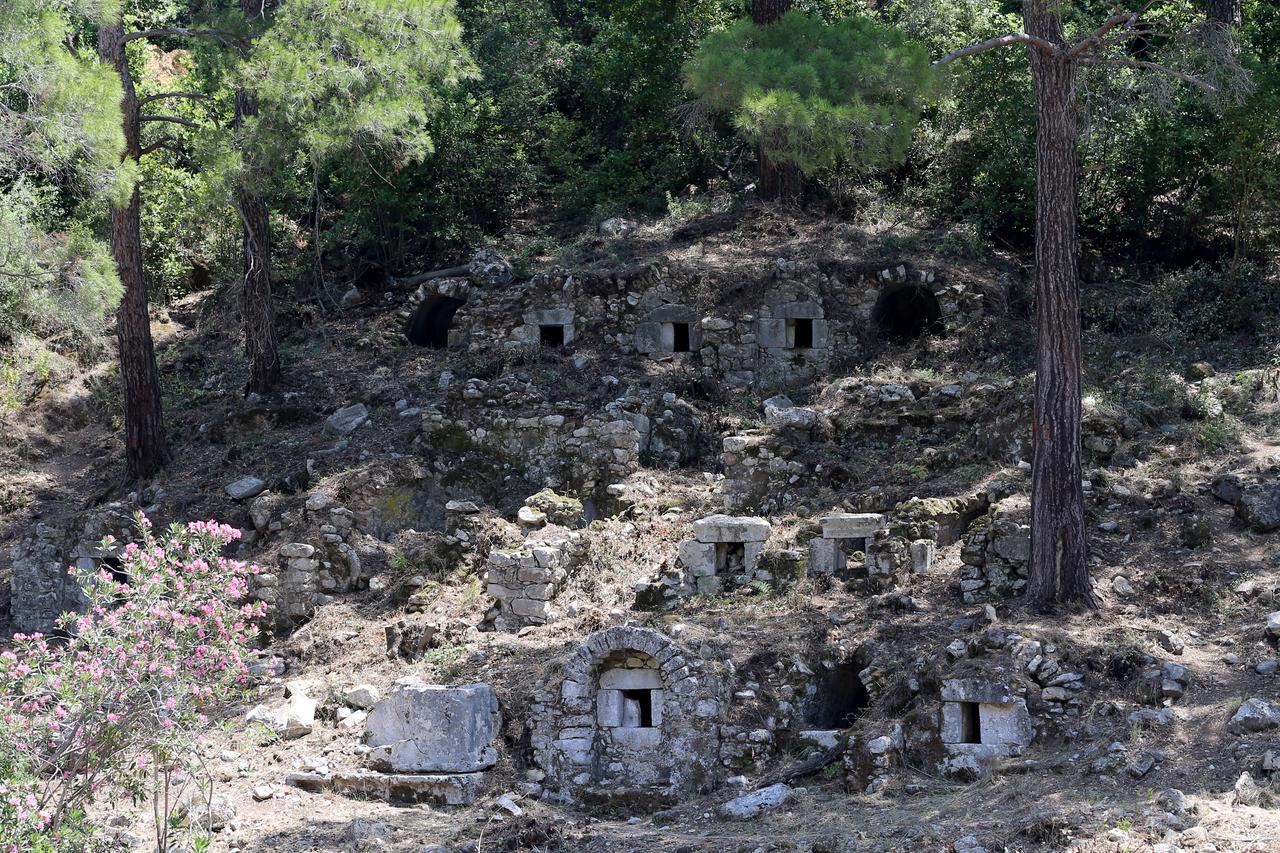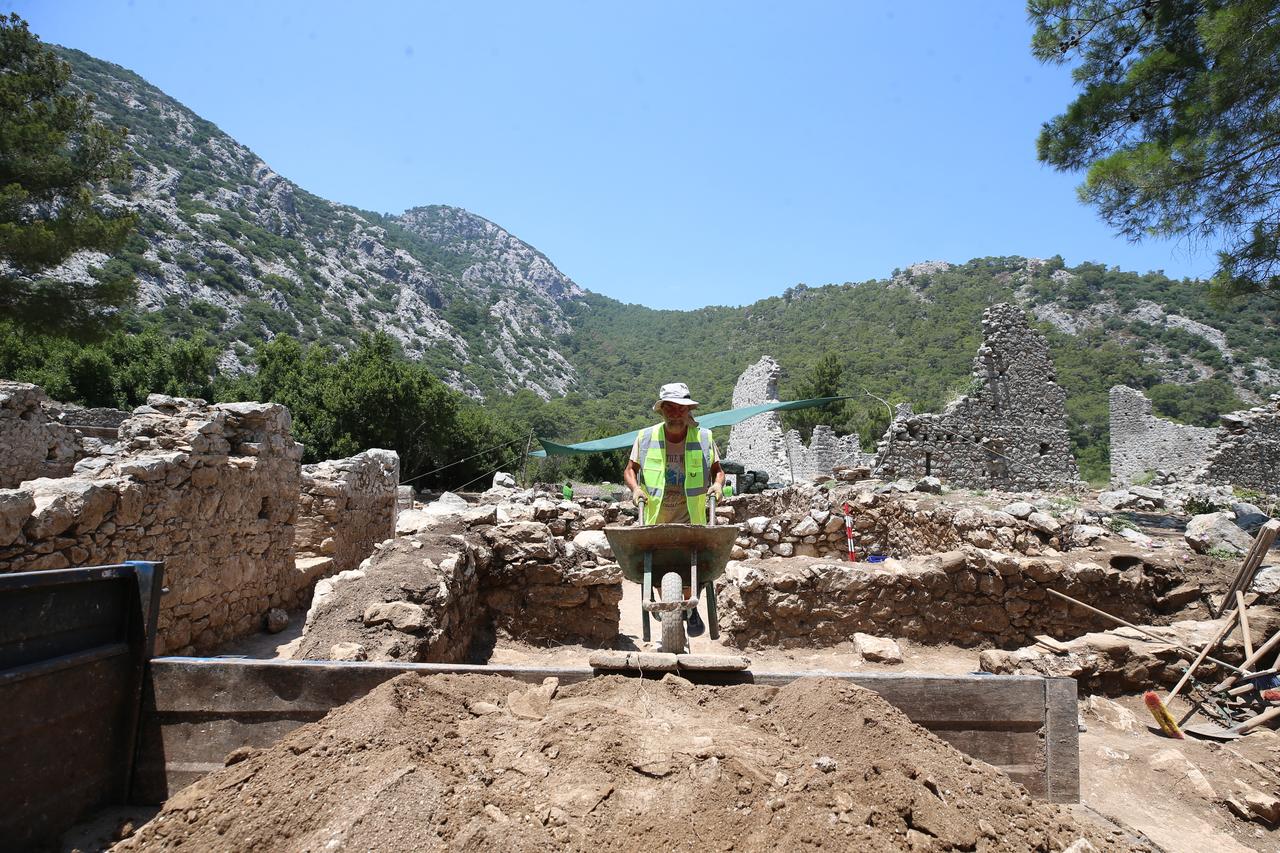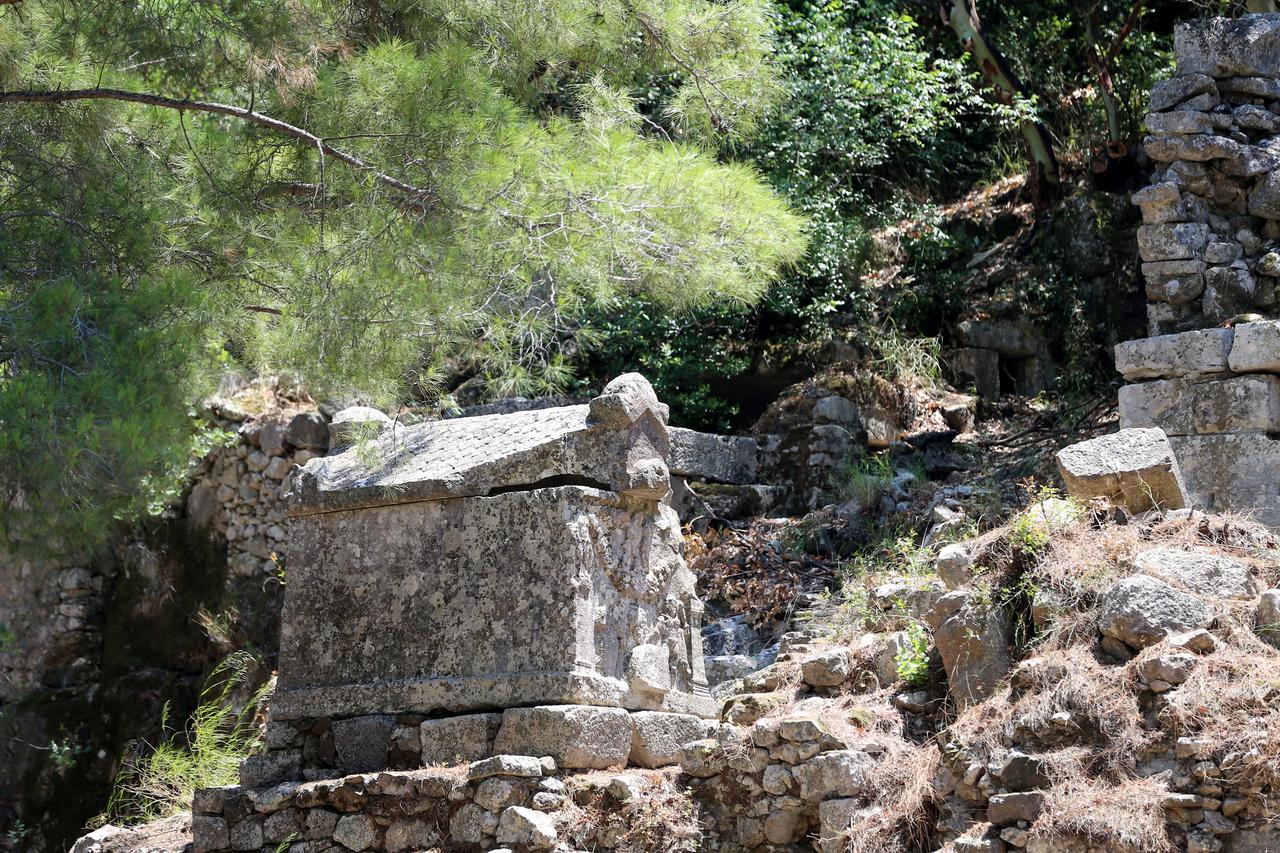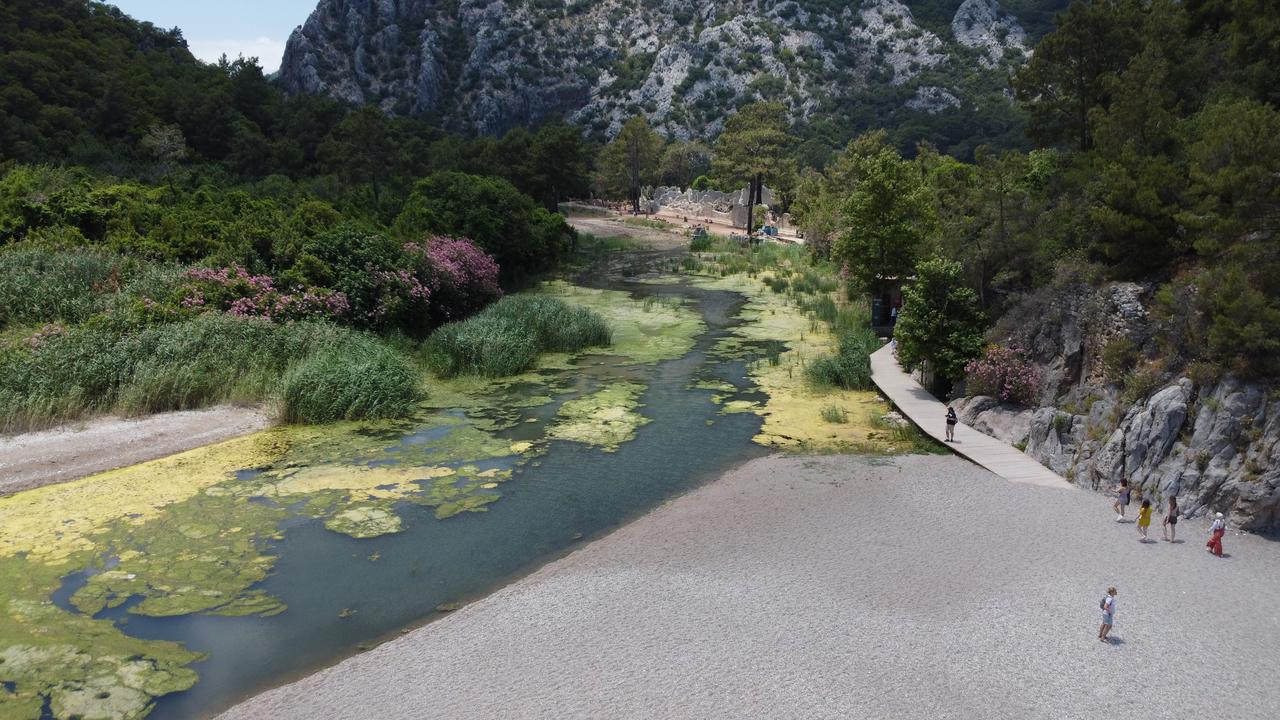
Roman-era rock tombs unearthed in the ancient city of Olympos, located in the Kumluca district of Antalya, Türkiye, have been opened to the public for the first time. These tombs, long shrouded by dense vegetation, are now part of the visitor walking route through the historic Lycian city, one of the most significant settlements of the ancient Lycian civilization.
Divided by a river that flows into the Mediterranean Sea, Olympos has long enchanted visitors with its ruins nestled on both banks and its lush, wild setting. Excavations in the city, launched in 2006, have accelerated in recent years thanks to increased funding under the Ministry of Culture and Tourism’s "Heritage for the Future" project.

For decades, thick clusters of pine and laurel trees concealed a large necropolis on the city’s southern slope. This year, a combination of vegetation clearing and trail construction has transformed the area. Visitors can now walk newly established paths through the ancient burial ground, viewing tombs that were inaccessible until now.
Among the tombs are impressive vaulted chamber graves and larger room tombs containing stone sarcophagi. These structures, some arranged in rows climbing up the slope for over 400 meters, offer a new and intimate glimpse into Olympos’ funerary landscape.

Associate Professor Gokcen Kurtulus Oztaskin, excavation director and faculty member at Pamukkale University, explained that the team has been conducting uninterrupted archaeological work year-round with the support of the Ministry of Culture and Tourism. Recent efforts have focused on the city’s southern necropolis and the western entrance, particularly along the axes of the Nekropol and Liman streets.
“Within our excavation program, we have conducted digs not only in Roman-era tombs but also in early Byzantine residential structures,” said Oztaskin. “Simultaneously, we are working on documentation and conservation efforts throughout the site.”

The southern necropolis has yielded more than 270 individual graves, including burials of wealthy elites, Roman soldiers stationed in the area, and enslaved individuals. This broad demographic range provides a valuable dataset for understanding the social structure of ancient Olympos.
“Alongside architectural documentation, we are also conducting epigraphic studies of inscriptions found on the tombs,” Oztaskin added. “These discoveries are expanding our understanding of the city’s demographic composition and historical development.”

Olympos’ archaeological portfolio continues to grow, with major findings in recent years including churches (designated 1 and 3), a bishop’s palace, an entrance complex, monumental tombs, a bridge, mosaicked structures, and the Antimachos sarcophagus.